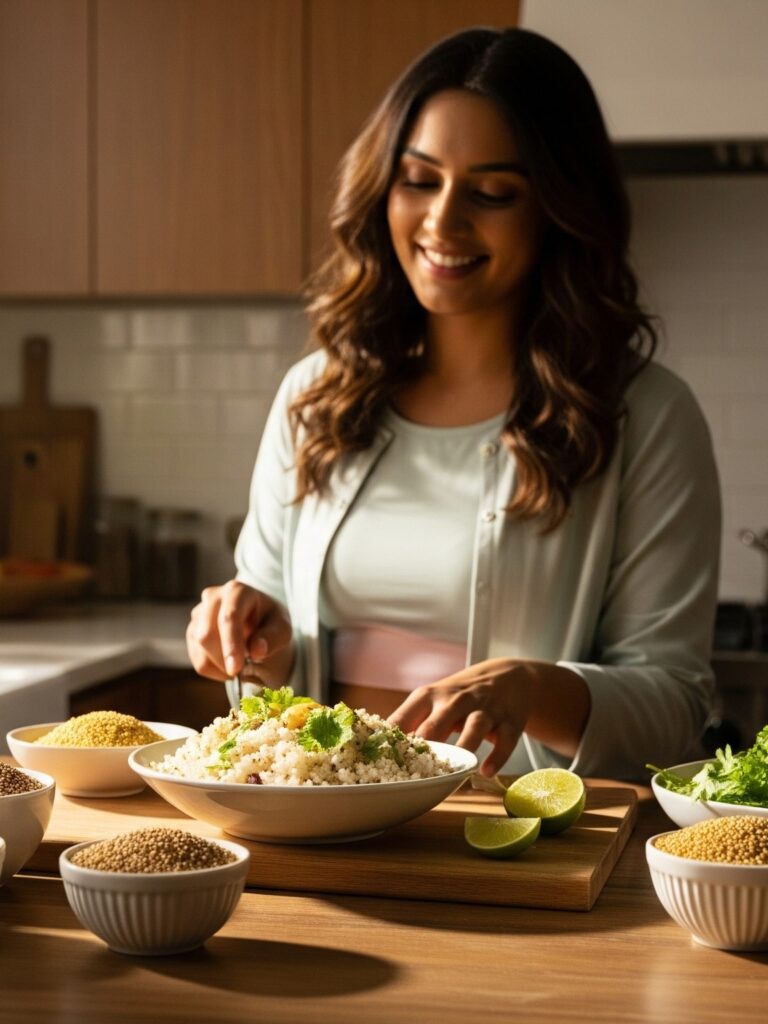Can You Prevent Prediabetes From Advancing Into Diabetes?
Medically Reviewed By
Aditya Khurana (MD, MBBS)
In this blog
What is GLP-1 and how does it work?
Week-by-Week breakdown
Tips and lessons from real users
The EARLY Perspective
Conclusion
About the Author
References
Ready to lose weight for good?
If you’re feeling tired more often, gaining belly fat, or getting abnormal sugar test results, you might already be in the grey zone. Prediabetes affects nearly 136 million Indians, and most don’t know they have it.
It’s silent. It’s common. And the transition to full-blown diabetes can be fast. But here’s the hopeful part: you can prevent it. And you don’t need medications to start. You just need early action.
What Is Prediabetes?
Prediabetes means your blood sugar levels are higher than normal, but not high enough to be classified as type 2 diabetes.
- Fasting blood glucose: 100–125 mg/dL
- HbA1c: 5.7%–6.4%
Why Should You Act Now?
India is already the diabetes capital of the world, with over 101 million diabetics and another 136 million living with prediabetes (ICMR–INDIAB, 2023). Without intervention, 50–70% of prediabetic Indians will progress to type 2 diabetes within 5–10 years. And it doesn’t end there:
- Prediabetes raises the risk of heart disease, fatty liver, PCOS, and stroke
- Diabetic complications like retinopathy and neuropathy can begin during prediabetes
- The average cost of managing diabetes in India is ₹20,000–₹35,000 per year, and much more if complications arise
How Can You Prevent It?
- Diet
You don’t need to give up Indian food, but you do need to rethink how you eat it.
Small tweaks make a big difference:- Replace white rice with brown rice, millets (like jowar, bajra), or quinoa
- Add protein to every meal: dal, paneer, curd, eggs, sprouts, meat
- Avoid sugary chai, biscuits, fruit juices, opt for unsweetened herbal tea or nimbu pani
- Include raw salads or vegetables before meals to slow glucose spikes
Traditional Indian diets can be very healthy — if you remove refined carbs and increase fiber + protein.
- Exercise
Just 30 minutes of walking a day can reduce diabetes risk by up to 50%.
Start small:- Walk after meals, even a 10-minute post-lunch stroll improves blood sugar
- Try bodyweight exercises at home (squats, push-ups, planks)
- For older adults: yoga, slow jogging, or physiotherapy-based routines
Consistency is more important than intensity. Aim for at least 150 minutes per week.
- Weight Loss
For Indians, abdominal fat is especially risky. Even a normal-BMI person can have insulin resistance if they have belly fat, it’s called TOFI (Thin Outside, Fat Inside). Losing just 5–7% of your body weight can drastically reduce your risk of diabetes.
Example: If you weigh 80 kg, losing just 4–6 kg can halve your risk. - Sleep and Stress
Don’t underestimate them. Both are proven triggers for high blood sugar.- Get 7–8 hours of consistent sleep; poor sleep raises insulin resistance
- Chronic stress increases cortisol, which increases glucose levels
- Meditation, yoga nidra, and even daily 15-minute breaks can help.
Urban Indian lifestyles are high-stress. Managing this is not a luxury — it’s a strategy.
Real-World Success: Indian Data
- The ICMR-INDIAB Study (2023) showed a sharp rise in diabetes and prediabetes in both urban and rural India , with lifestyle being the main driver.
- The Indian Diabetes Prevention Programme (IDPP-1) found that moderate lifestyle changes (diet + exercise) reduced diabetes incidence in prediabetics by 28.5% over 3 years — comparable to metformin.
- In a trial at AIIMS, structured lifestyle coaching for 6 months led to over 60% of prediabetic participants returning to normal glucose levels.
The lesson: prevention works, even in high-risk Indian populations.
Are There Any Medications?
Yes, but they’re not first-line.
- Metformin is sometimes prescribed for high-risk prediabetic individuals (especially if overweight or under 45)
- GLP-1 receptor agonists like Semaglutide or Tirzepatide (Mounjaro) are being explored for high-risk cases but are not standard or affordable for most
Still, for 90% of Indians with prediabetes, lifestyle changes are safer, more affordable, and more sustainable.
The Prevention Formula Is Not a Fad
This isn’t a no-carb keto diet or a 30-day challenge.
It’s about lifelong changes you can stick to with Indian food, Indian routines, and Indian challenges in mind.
Forget quick fixes. Focus on:
- Balanced thalis
- Mindful eating
- Walking every day
- Managing screen time and sleep
You don’t have to be perfect. You just have to start.
Bottom Line
Prediabetes is your early warning. And in India, that warning is getting louder.
The good news? You have time. You have tools. You have control.
With simple changes, home-cooked food, 30-minute walks, better sleep, you can completely reverse prediabetes.
The earlier you start, the better your outcomes.
Ready to Take Action?
- Take our free Metabolic Score Test
- Book a consultation with our nutritionist

About the Author
Wrishila Pal
Wrishila leads marketing at Early, bringing over 5 years of writing experience across brand, performance, and product. A published author who began her journey in storytelling, she’s built content engines, scaled narratives across industries, and believes great writing balances clarity, emotion, and impact, especially when it comes to health.
References
- Anjana RM, Deepa M, Pradeepa R, et al. ICMR–INDIAB Study (2023)
- Ramachandran A, Snehalatha C, Mary S, et al. Indian Diabetes Prevention Programme (IDPP-1), Diabetologia. 2006
- Misra A, Vikram NK. Insulin resistance syndrome in Asian Indians: nutritional and lifestyle implications
- Joshi SR, Parikh RM. India – the diabetes capital of the world: now heading towards hypertension
- American Diabetes Association. Standards of Medical Care in Diabetes – 2024.
- WHO/IDF: Global Report on Diabetes. India Chapter.
- AIIMS Delhi Pilot Lifestyle Study, internal publication (2022)
In this blog
What Is Prediabetes?
Why Should You Act Now?
How Can You Prevent It?
Real-World Success: Indian Data
Are There Any Medications?
The Prevention Formula Is Not a Fad
Bottom Line




